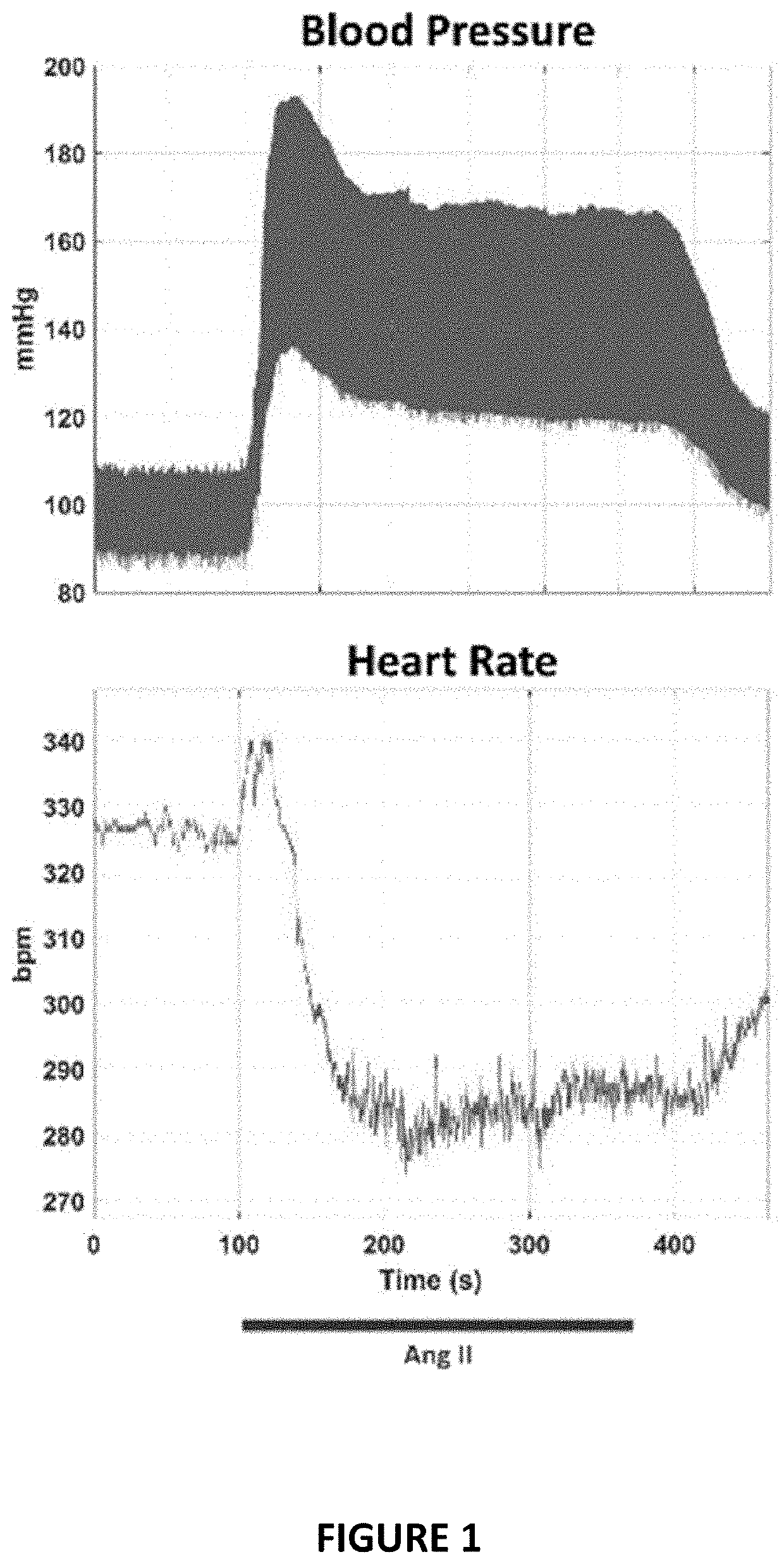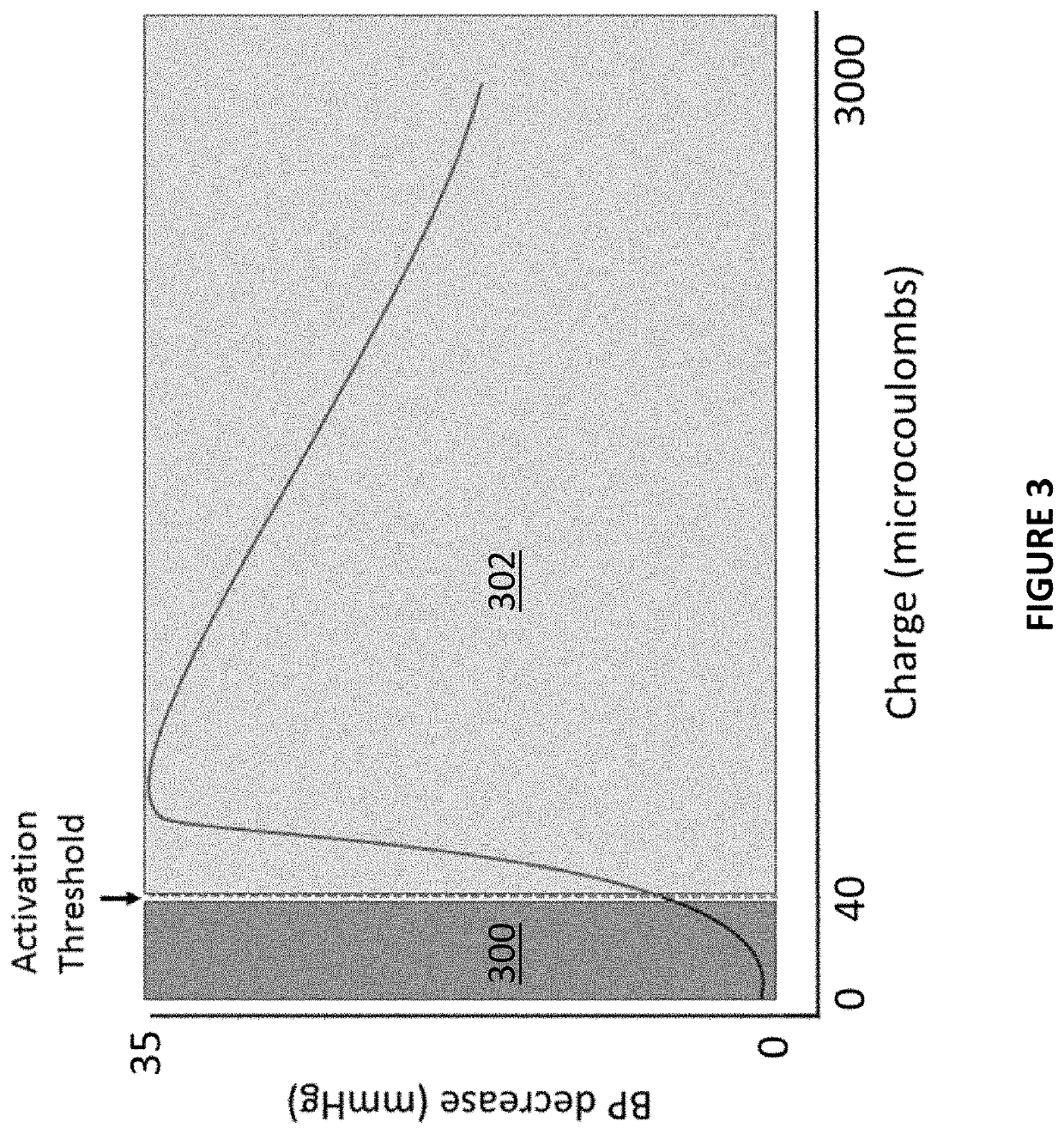Non-invasive and selective bioelectronic control of blood pressure
- Summary
- Abstract
- Description
- Claims
- Application Information
AI Technical Summary
Benefits of technology
Problems solved by technology
Method used
Image
Examples
Embodiment Construction
[0020]Currently, it is believed that stimulation of the left cervical branch of the vagus nerve activates ascending aortic baroreceptor fibers (mediating vasodilation) as well as descending cardiac sinoatrial fibers (mediating bradycardia). Thus, cervical Vagus nerve stimulation (cVNS) sufficient to induce a response can cause a decrease in blood pressure but also causes a corresponding slowing of the heart rate. A decrease in breathing rate (bradypnea) has also been found with cVNS.
[0021]However, when treating hypertension, it would be desirable to avoid exacerbating bradycardia and bradypnea during hypertensive events. This is because the body commonly attempts to decrease blood flow during high blood pressure states via ‘reflexive’ slowing of the heart and breathing. This type of response is illustrated in FIG. 1. As seen therein, a hypertensive crisis was induced with the application of Angiontensin II (Ang II) via injection. As measured blood pressure increased in response to t...
PUM
 Login to View More
Login to View More Abstract
Description
Claims
Application Information
 Login to View More
Login to View More - R&D
- Intellectual Property
- Life Sciences
- Materials
- Tech Scout
- Unparalleled Data Quality
- Higher Quality Content
- 60% Fewer Hallucinations
Browse by: Latest US Patents, China's latest patents, Technical Efficacy Thesaurus, Application Domain, Technology Topic, Popular Technical Reports.
© 2025 PatSnap. All rights reserved.Legal|Privacy policy|Modern Slavery Act Transparency Statement|Sitemap|About US| Contact US: help@patsnap.com



